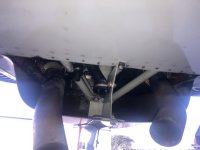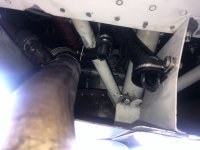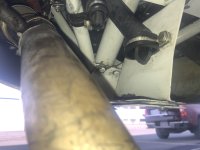As a jet pilot, you're aware that a reduction in lift goes hand in hand with a reduction in air density. Suspension of aerosol oil droplets in blow-by gas is no different. I'm not likely to revise my current breather system to demonstrate the point, but since you asked for data, I will offer a case history.
This is a 503cc four valve single. It was my favorite 1980's engine experimentation mule, because modification was cheap and easy...one piston, one carb, one set of ports, etc. Photo was taken just after the '86 WERA GNF, where I finished as the #2 Expert in Formula II.
View attachment 69608
A single has a HUGE case pressure problem. Every time the piston descends, it displaces 503cc of crankcase volume, then as the piston rises, it tries to pull 503cc into the case from the outside air. To combat that pumping, most singles and opposed twins (boxer BMW, for example) are designed with a rudimentary one-way valve in the breather. The idea is to displace the case volume out the breather the first time the piston(s) move toward BDC, and not let it back in. Crankcase gas is thus limited to blow-by and some valve leakage. The result is moderated case pressure at BDC, and hopefully something less than atmospheric near TDC. Still a pump, but better than nothing.
The rulebook required a catch can, for good reason. Turned to 10,000 RPM with a stock breather, this thing would fill half a 16oz catch can
in 12 laps.
As every racer knows, if the rulebook doesn't mention something, it's legal, at least until they write the next rulebook. To reduce pumping loss
and fix the oil problem, I built a catch can with a two-stroke tent reed hidden inside. The lower volume of the catch can was tapped high on the side, and piped to an exhaust tap in the collector, just like today's Sky Dynamics exhaust. The exhaust tap subjected the crankcase to about 5" negative pressure, and the tent reed meant no reverse leakage. Case pressure was likely always below atmospheric, even at BDC. Catch can oil volume went from 8oz in 12 laps to 8 oz
for the entire remainder of the season.
Low density gas transports less oil. Reduce density to a true vacuum and it becomes impossible to transport aerosol oil.
Returning to the OP's issue...
The Lycoming also has a pumping problem, but it's between the fore and aft crankcase volumes, not crankcase to atmosphere. The amount of gas leaving via the breather port is a function of ring leakage only. Reduction of crankcase pressure
improves ring sealing. In Bubba terms, no amount of sucking on the breather hose will increase oil loss.
View attachment 69609







